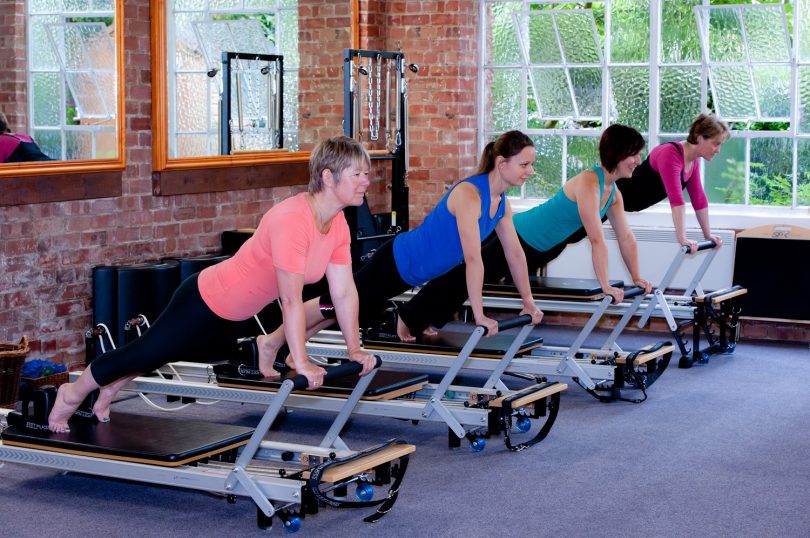Pilates was developed by German born Joseph Pilates in the early 20th century. It was mainly popularised in the United States, where Joseph moved to with his wife in 1923. It also became popular in the United Kingdom where he lived and trained others with his method early in his career.
Contrology is the term he used originally to describe the art of controlled movements of body, mind and spirit. He aimed for his students to acquire complete control of their bodies through repetition of specific exercises that would improve flexibility, strength and co-ordination. Pilates believed that body and mind were interrelated. The method puts emphasis on alignment, breathing, and developing a strong center, while improving coordination and balance. Pilates’ system allows for different exercises to be modified in range of difficulty from beginner to advanced.

Part scientist, mechanical genius and anatomist, Joseph Pilates accompanied his method by a variety of equipment he referred to as “Apparatus.” The most known piece today, called the Reformer was designed to enhance the stretching, strengthening and alignment that started by the matwork. Eventually a full complement of equipment and accessories was designed by Pilates, including the Cadillac, Chair, Spine Corrector, Ladder Barrel and Pedi-Pole.
Joseph trained many students through his studio in New York City who then opened up their own studios and over time modified the exercises into more modern versions that we see today. Rehabilitation specialists have adapted Pilates Contrology to match biomechanical principles and postural understanding. In 1980 six “principles of Pilates” were published that have been widely adopted—and adapted—by the wider community. The original six principles were concentration, control, center, flow, precision, and breathing. There currently are several schools of practice some keeping true to Josephs original principles but others taking from a variety of other therapies and movement ideas to create more holistic practices.
The difference between Yoga and Pilates
People often ask if Pilates is like Yoga and I find myself saying “they are very similar mind body practices” but fundamentally there are some key differences.
The spirit
Yoga is rooted in a spiritual, meditative practice, and many contemporary yoga classes choose to bring this element to the mat. Although Pilates is a mindful practice there is no chanting, finding your chakras or becoming in tune with your spiritual centre. Breathing is a key focus in both but where Yoga encourages a belly breath, Pilates develops a 3-dimensional breath into the ribs and diaphragm. If you are looking to relax, de-stress and restore then Yoga is more suitable and if you wish for better posture and a stronger core then Pilates is ideal.
Alignment
In Pilates there is a strong focus on alignment where anatomical cues are used to gain a better understanding of the body and its mechanics. Yoga is less focused on the anatomy and mechanics of an exercise and more on positioning the body to achieve the ideal range of the pose. Pilates puts great emphasis on using the deep abs and pelvic floor to provide stability for the limbs to move three-dimensionally in space. While there are some aspects of yoga that relate to alignment, classes are more mindful than anatomical.




